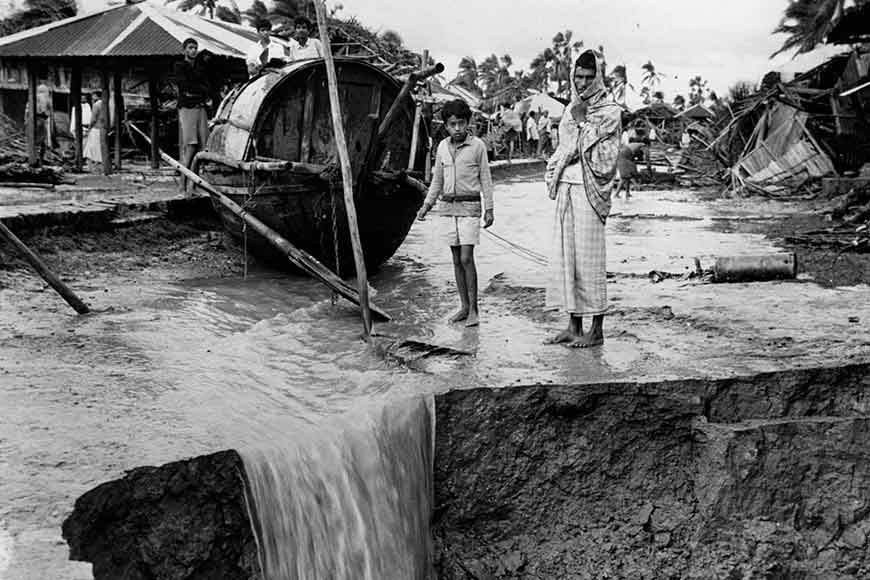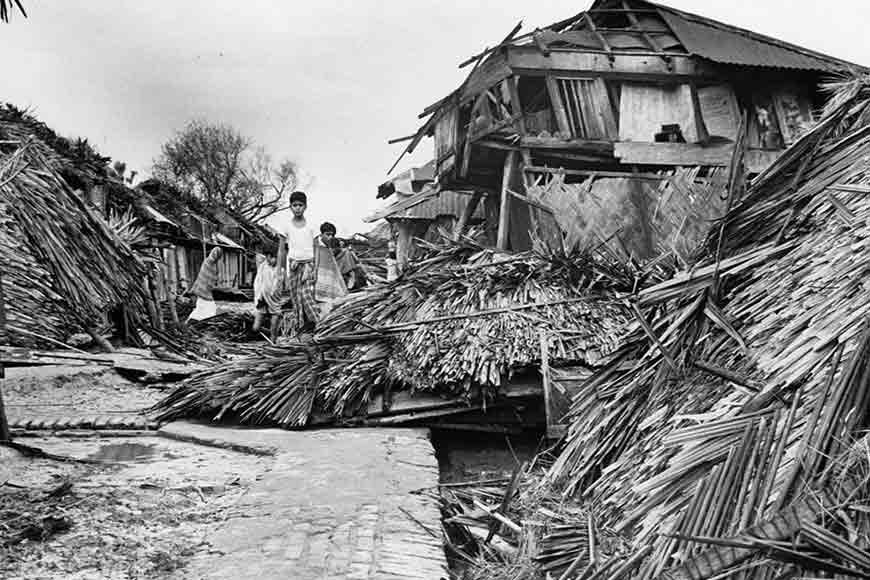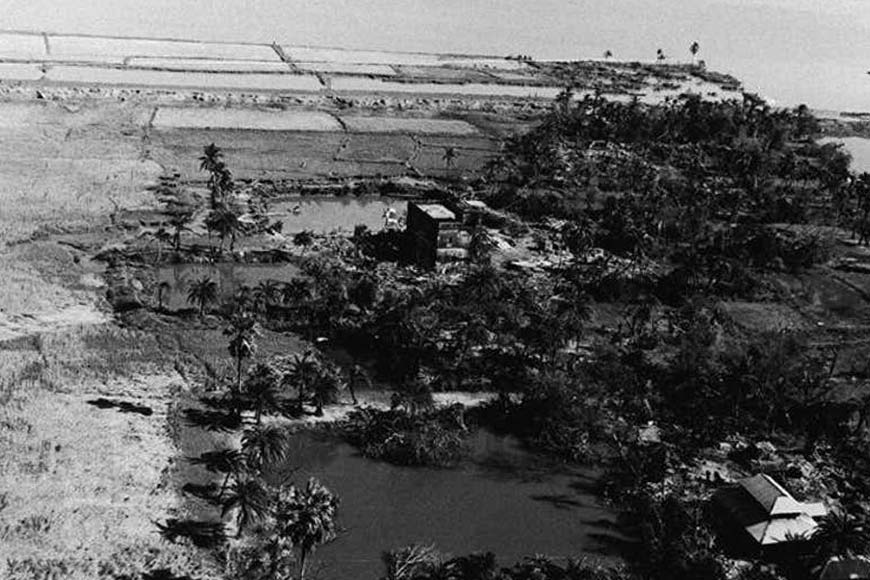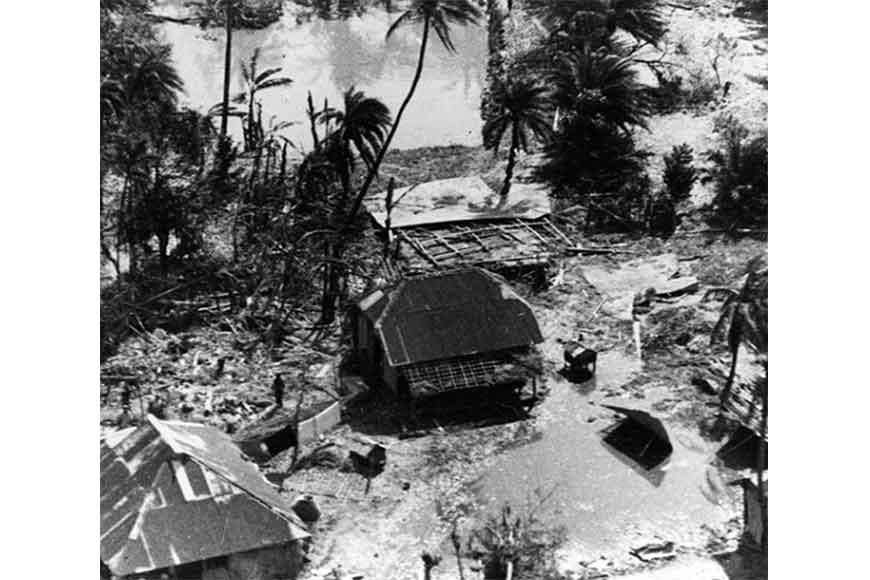The cyclone which became a trigger for the birth of a nation

With cyclone season still upon us, we should perhaps be thankful that neither West Bengal nor Bangladesh seem to have attracted a major cyclone thus far this year. However, with no guarantee of when the next one may strike, we thought it a good time to look back on the deadliest cyclone to have struck our part of the world so far. So great was its impact that, apart from killing an estimated 5,00,000 people in all, an incredible number by any standards, it also became one of the catalysts in the creation of a new nation, and set off a chain of international events.
.jpg) Bhola Cyclone-(1970)
Bhola Cyclone-(1970)
The year was 1970, and Bangladesh was still East Pakistan. On November 8, a cyclone began forming over the central Bay of Bengal and then traveled northward, gathering strength on the way. At its peak, it unleashed winds of 185 kmph (115 mph) on November 10, and made landfall on the coast of East Pakistan in the early hours of November 12, spilling across to the afternoon. Till date, it remains one of the world’s deadliest natural disasters.
Since the practise of naming tropical cyclones in the Indian Ocean region is a fairly recent one, the 1970 cyclone is officially nameless, though it came to be popularly known as the Bhola cyclone after the town in Barisal. Today, Bhola is a city and the headquarters of Bhola district in Bangladesh’s Barisal division.

The nearly 20-foot storm surge created by winds as high as 225.3 kmph (140 mph) devastated countless offshore islands, wiping out entire villages and destroying crops and livestock. In the most severely affected subdivision of Tazumuddin, over 45 percent of the population of 167,000 was killed. Though meteorologists knew of the approaching storm, lack of adequate technology made it impossible to communicate this to most residents of the coastal plain and the islands of the Ganges delta. As a result, many of those killed outright were asleep when the storm surge struck. Many thousands also later died of starvation and diseases caused by floodwaters.
In the words of famous Bangladeshi poet Daud Haider, who now lives in Germany and was a teenager at the time, “None of us had seen anything remotely like it before. There were comparisons to Noah’s Flood from the Bible, so unprecedented the whole thing was. Within two days, the air was heavy with the smell of rotting corpses. Dhaka, too, was lashed by storm and rain, the entire city was in darkness as the power went off. And yet, not a single member of the West Pakistan administration bothered to turn up to inspect the terrible damage.”

A few days after the disaster, with East Pakistanis seething in anger against the West Pakistan government, political leader Maulana Abdul Hamid Khan Bhashani held a rally at Dhaka’s old Paltan Maidan, famously declaring, “Ora keu aseni (none of them turned up),” and went on to say, “From today, we are independent East Bengal, no longer East Pakistan”. The next day, says Haider, ‘Ora keu aseni’ was printed as a banner headline in the newspaper ‘Pakistani Khabar’, controlled by the Pakistan government’s Press Trust.
The Awami League, headed by Sheikh Mujibur Rahman, swept to a landslide victory in the national elections in December 1970, as people vented their anger at the failure of the relief efforts by the national government of Pakistan. Elections to nine national assembly and 18 provincial assembly seats had to be postponed to January 1971 owing to the storm.

Internationally, India became one of the first nations to offer aid, despite the sour relations between the two countries, and by the end of November had pledged millions of dollars for relief efforts. However, the Pakistani government refused to allow supplies to be sent into East Pakistan by air, forcing them to be transported by road instead. The Indian government also said that Pakistan refused an offer of military aircraft, helicopters and boats from West Bengal.
Incidentally, on November 12, the Bhola cyclone also sank the MV Mahajagmitra, a 5,500-ton freighter en route from Calcutta to Kuwait, with all 50 people on board being killed. The ship sent out a distress signal and reported hurricane-force winds before it sank. There was also widespread rain in West Bengal and southern Assam, damaging houses and crops in both states.











